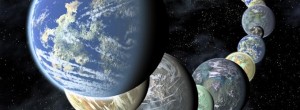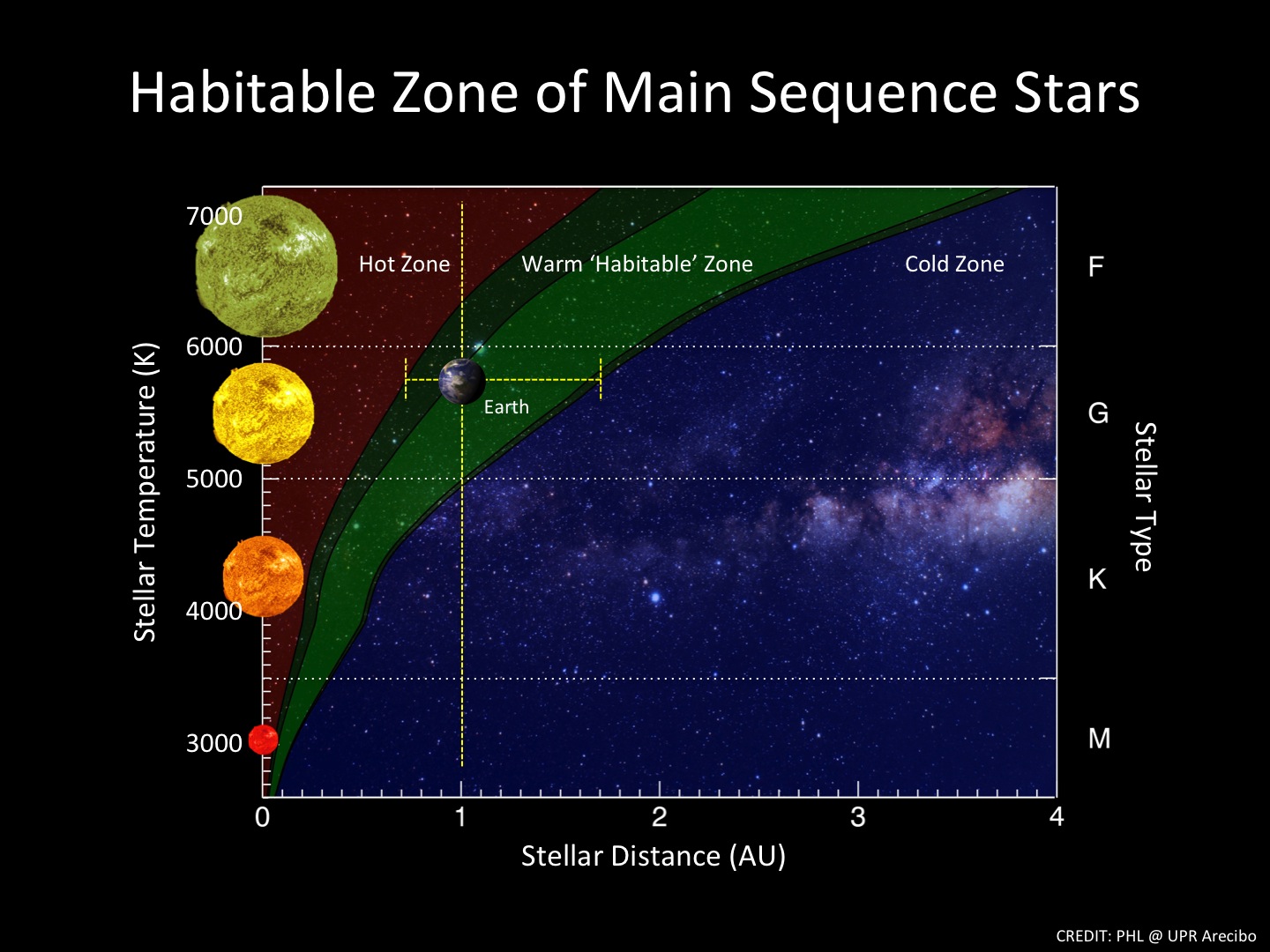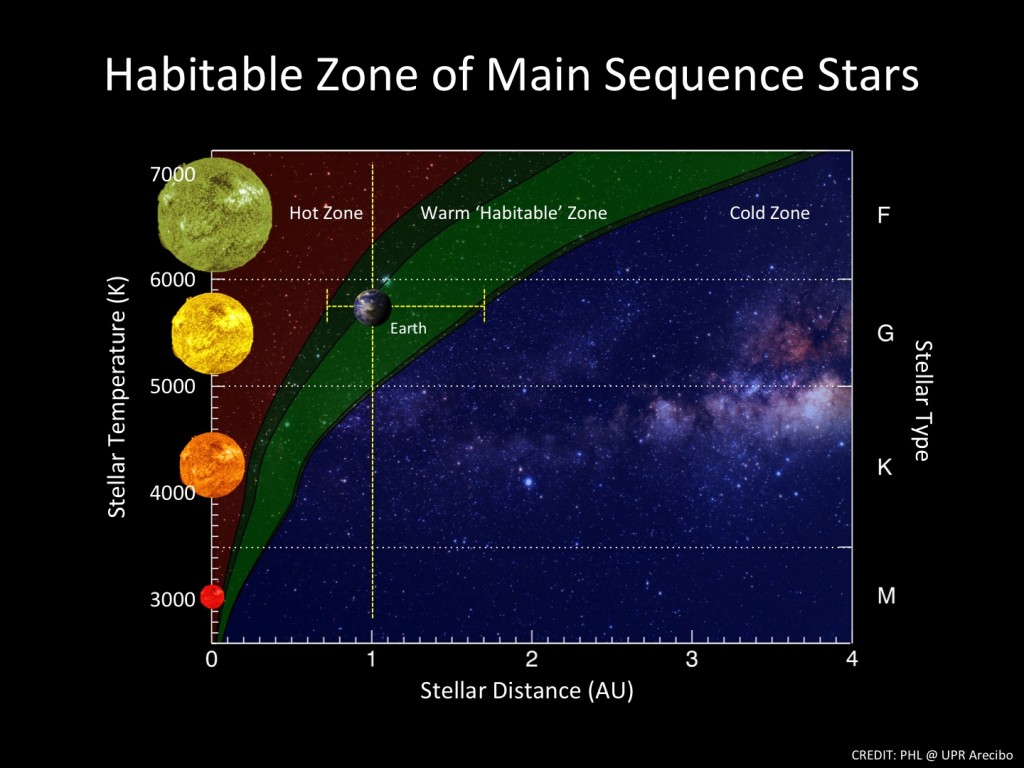December 18, 2013 – In this week’s issue of the journal, Nature, a new exoplanet climate model redefines the Goldilocks Zone, the appropriate conditions for life on planets in other solar systems. The model provides a much narrower definition of where we will find life in the rest of the Universe.
Life here on Earth is based on the presence of liquid water. A planet with water present receiving 10% more solar radiation than Earth would experience a runaway greenhouse effect, evaporating the oceans and leading to Venus-like conditions. But solar radiation is but one factor in determining a Goldilocks Zone.
In contrast this new habitability climate model brings greater dimension to understanding atmospheric complexities and the role clouds play in the greenhouse effect. According to the model, as a planet warms it forms high altitude clouds in the atmosphere. These are more efficient in trapping heat than lower-level clouds. The climate model further shows that atmospheric circulation at mid-latitudes tends to limit the amount of clouds. This means more solar radiation strikes the planet surface directly and radiates back into space limiting the heat effect. The end result, a model that shows our Solar System’s habitable zone to be 142 million kilometers (88.2 million) miles from the Sun, about 5% closer to our star than Earth is today.
This cuts the number of habitable planets which are Earth-like to about half of previous estimates, which previously estimated that 22% of Sun-like stars in the Milky Way could support life. Still 11% of 20 billion Sun-like stars just in our galaxy is no small number. With 2.2 billion opportunities for life to happen you have to like the odds. And some of that life may be closer than we think. That’s because within 50 light years of our Solar System there are 100 stars classified as Sun-like. That means a probability that 11 fit within this new Goldilocks Zone definition.
What does exoplanet climate modeling do for us here on Earth? For one it helps us better understand the complexity of our own planet’s atmosphere and its relationship with our Sun. And considering the challenges we currently face because of the burning of carbon-based fuels for energy, puts limits on habitability. Habitability has become our job. We need to ensure that conditions remain “not too hot, not too cold, just right” so that our future Goldilocks have a home where we can remain right here on Earth for a billions or more years to come.


















